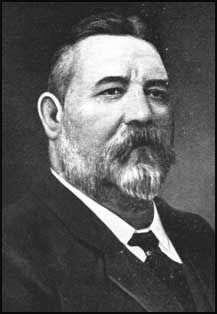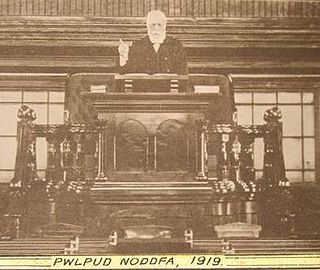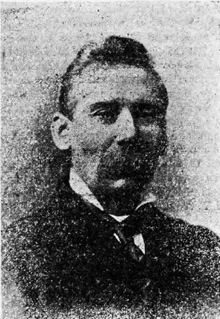Related Research Articles

The Coal strike of 1902 was a strike by the United Mine Workers of America in the anthracite coalfields of eastern Pennsylvania. Miners striked for higher wages, shorter workdays, and the recognition of their union. The strike threatened to shut down the winter fuel supply to major American cities. At that time, residences were typically heated with anthracite or "hard" coal, which produces higher heat value and less smoke than "soft" or bituminous coal.
The Miners' Federation of Great Britain (MFGB) was established after a meeting of local mining trade unions in Newport, Wales in 1888. The federation was formed to represent and co-ordinate the affairs of local and regional miners' unions in England, Scotland and Wales whose associations remained largely autonomous. At its peak, the federation represented nearly one million workers. It was reorganised into the National Union of Mineworkers in 1945.

William Brace was a Welsh trade unionist and Liberal and Labour politician.

William Abraham, universally known by his bardic name, Mabon, was a Welsh trade unionist and Liberal/Labour politician, and a member of parliament (MP) from 1885 to 1920. Although an MP for 35 years, it was as a trade unionist that Abraham is most well known. Initially a pioneer of trade unionism, who fought to enshrine the principle of workers' representation against the opposition of the coal-owners, he was regarded in later life as a moderate voice believing that disputes should be solved through conciliation rather than industrial action. This drew him into conflict with younger and more militant leaders from the 1890s onwards. Although the defeat of the miners in the Welsh coal strike of 1898 was a clear defeat for Mabon's strategy, his prestige was sufficient to ensure that he became the first president of the South Wales Miners' Federation which was established in the wake of the dispute. Abraham was noted for his powerful speaking voice, and was a renowned orator in English and Welsh.

The South Wales Miners' Federation (SWMF), nicknamed "The Fed", was a trade union for coal miners in South Wales. It survives as the South Wales Area of the National Union of Mineworkers.

The Welsh coal strike of 1898 was an industrial dispute involving the colliers of South Wales and Monmouthshire. The strike began as an attempt by the colliers to remove the sliding scale, which determined their wage based on the price of coal. The strike quickly turned into a disastrous lockout which would last for six months and result in a failure for the colliers as the sliding scale stayed in place. The strike is seen as an important landmark in Welsh history as it saw the true adoption of trade unionism in the southern coalfield which had been slow to take hold before then. The South Wales Miners' Federation was the largest trade union to have originated from this dispute.
The Tarenni Colliery and its associated workings, are a series of coal mines and pits located between the villages of Godre'r Graig and Cilybebyll located in the valley of the River Tawe, in Neath Port Talbot county borough, South Wales.
The first election to the Glamorgan County Council were held on 17 January 1889. Results were announced over several days. They were followed by the 1892 election. The authority, by far the largest county in Wales in terms of population, was established by the 1888 Local Government Act. The county of Glamorgan was at this time becoming heavily industrialised although some areas such as the Vale of Glamorgan remained essentially rural.

William Morris, widely known by his bardic name, Rhosynnog, was the minister of Noddfa Baptist Church, Treorchy, South Wales from soon after its formation in 1868 until his death.
The second election to the Glamorgan County Council was held on 8 March 1892. The 1889 election was the first contest and the next was the 1895 election. Glamorgan County Council had been established by the 1888 Local Government Act, and the first election held in January 1889. Glamorgan was by far the largest county in Wales in terms of population. The county of Glamorgan was at this time becoming heavily industrialised, although some areas such as the Vale of Glamorgan remained essentially rural. The rise of nonconformist liberalism, especially since the 1860s, throughout Wales, had challenged the prevailing influence of the landed gentry. However, even in 1889, the traditional forces remained influential and no working men were elected to the Council. This changed in 1892 with the unopposed return of David Morgan in Aberdare and the success of Isaac Evans in Resolven.
Frederick Lewis Davis was a Liberal politician and a member of a notable family of coal owners in South Wales. His grandfather, David Davis, Blaengwawr was a pioneer of the coal trade in the Aberdare valley while his father, Lewis Davis and uncle, David Davis, Maesyffynnon developed the business and were pioneers of the coal trade in the Rhondda, most notably at Ferndale. Having trained as a barrister, Davis joined the family business.
David Morgan was a Welsh miners' agent and trade unionist who played a prominent role in the history of industrial relations in the South Wales Coalfield from the 1870s until his death in 1900.
The Forest of Dean Miners' Association was a trade union for coal miners in the Forest of Dean area of England.

The Monmouthshire and South Wales Coal Owners' Association (MSWCOA) was an association of mine owners in South Wales that was active between 1873 and 1955. It fought wage increases, safety regulations, unionisation and other changes that would cut into profits. It managed to link miners wages, which were based on piece-work, to the price of coal. It was involved in various labour disputes, including a lengthy strike in 1926. The coal mines became unprofitable in the 1930s and were nationalized in 1947, making the association irrelevant.
The Cambrian Miners' Association, also known as the Rhondda District Miners' Association, was an early trade union representing coal miners in the Rhondda Valley, in Wales.

Isaac Evans was a Welsh trade union leader and politician.
The Western Miners' Association was a trade union representing coal miners in parts of South Wales, centred on Neath.
The Ebbw Vale and Sirhowy Colliery Workmen's Association was a trade union representing coal miners in the Ebbw Vale area of South Wales.

Thomas Daronwy Isaac, often known simply as Daronwy, was a Welsh politician and trade unionist.
John Davies was a Welsh politician and trade unionist, who served as Mayor of Merthyr.
References
- ↑ "Meeting of Colliery Owners and Men at Llanelly". Welshman. 16 May 1873. p. 6. Retrieved 4 June 2019.
- ↑ "Meeting of Anthracite Miners". South Wales Daily News. 11 November 1881.
- ↑ "The Anthracite Colliery District. Settlement Attived At". South Wales Daily News. 26 August 1882. p. 4. Retrieved 31 May 2019.
- ↑ "Meeting of Anthracite miners at Brynamman". Western Mail. 15 May 1883.
- ↑ "Development of the Anthracite Coalfield". South Wales Daily News. 8 January 1892.
- ↑ "The Anthracite Miners & Mr W. Abraham". Cardiff Times. 25 June 1892.
- ↑ "Mr David Morgan and the struggle". South Wales Daily News. 15 August 1893.
- ↑ "Sad Death at Brynamman. Mr Enoch Rees Drowned". Carmarthen Weekly Reporter. 13 August 1897. p. 3. Retrieved 1 June 2019.
- ↑ "Drowning of a miners' secretary". Cardiff Times. 14 August 1897.
- ↑ Arthur Marsh and Victoria Ryan, Historical Directory of Trade Unions, vol.2, pp.201-258
- ↑ Robin Page Arnot, South Wales Miners, p.60
- ↑ "Anthracite Miners' Association". South Wales Daily News. 29 November 1898.
- 1 2 Hywel Francis and David Smith, The Fed
- ↑ "Anthracite Miners' Agent Elected". South Wales Daily News. 16 July 1900.
- ↑ "Mr Daronwy Isaac dead". Weekly Mail. 7 March 1903.